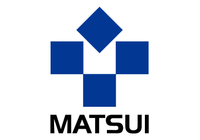Remote-controlled underwater camera system micro-ROV DTG2
【Remote-Controlled Underwater Camera System】The main unit weighs only 8.5 kg, making it lightweight! Underwater surveys in lakes and coastal bays are easy!
【Remote-Controlled Underwater Camera System】Micro-ROV DTG2 Weighing only 8.5 kg, it is lightweight! Underwater surveys in lakes and inland bays are easy! Since it is battery-powered, surveys can be conducted in locations without a power supply. Unlike conventional ROVs, the body can swim freely underwater, allowing for tracking and capturing images of subjects. Optional attachments include manipulators and sensor packs for water temperature, orientation, and depth measurement. The controller is gamepad-style, making it intuitive to operate. It eliminates unnecessary features, achieving an unprecedented low price. *For more details, please refer to the materials available by downloading the catalog.
basic information
Canada DEEP TREKKER Inc. Small ROV "DTG2" 【Standard Set】 ROV: Body made of cast aluminum System weight 13.6 kg, body weight 8.5 kg Powered by DC 19.2V battery Operating time: 2-4 hours (3 hours on full charge) Thrust: 1 knot (approximately 30 m/min) Operating environment: Depth rating: 50 m, water temperature: 0-40°C Controller: Gamepad style, IP64 rated waterproof structure Operating time: 10 hours (on full charge) Cable: Diameter 5 mm, standard length 50 m (optional: 75 m, 100 m) Camera & Lighting: 480 LINE COLOR Saves in AVI/MPG format, equipped with LED lighting Video Monitor Glasses: Operating time 1.5 hours (on full charge) (optional: 2-hour auxiliary battery) Advanced Micro LCOS screen, resolution: QVGA 320×240 (optional: QVGA 640×480) Carrying Case: 460×380×320 mm Cable Reel: Slip ring type 【Options】Small LCD monitor, manipulator, etc.
Price information
The price will change depending on the options, so please feel free to contact us.
Delivery Time
Model number/Brand name
DTG2
Applications/Examples of results
Environmental surveys and observations of natural water bodies (ponds, lakes, seas, etc.) Investigation of conditions within aquariums and aquaculture enclosures Sampling of benthic organisms (available as an option)
Related Videos
catalog(1)
Download All CatalogsRecommended products
Distributors
Thanks to your support, Matsui Corporation has a history that exceeds 75 years since its establishment. We cherish the trust and achievements we have cultivated during this time and have continuously responded to new market needs under the fundamental spirit of "We are professionals." The corporate symbol, renewed on the occasion of our 50th anniversary, consists of four squares that symbolize stability and cooperation. Three squares represent the core business areas of Matsui: "General Industry," "Marine Industry," and "International Trade," while the diamond shape represents the wisdom and shared consciousness of the employees who support these areas. As indicated by the corporate symbol, Matsui will continue to gather the wisdom and vitality of its employees and challenge itself as a proposal-oriented company in these three major business fields. *Our website has been renewed. Please take a look.* https://www.matsui-corp.co.jp/ *You can view an interview with our former president, a key figure.* https://www.ipros.jp/advertising/detail/29820?secure=true



























